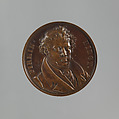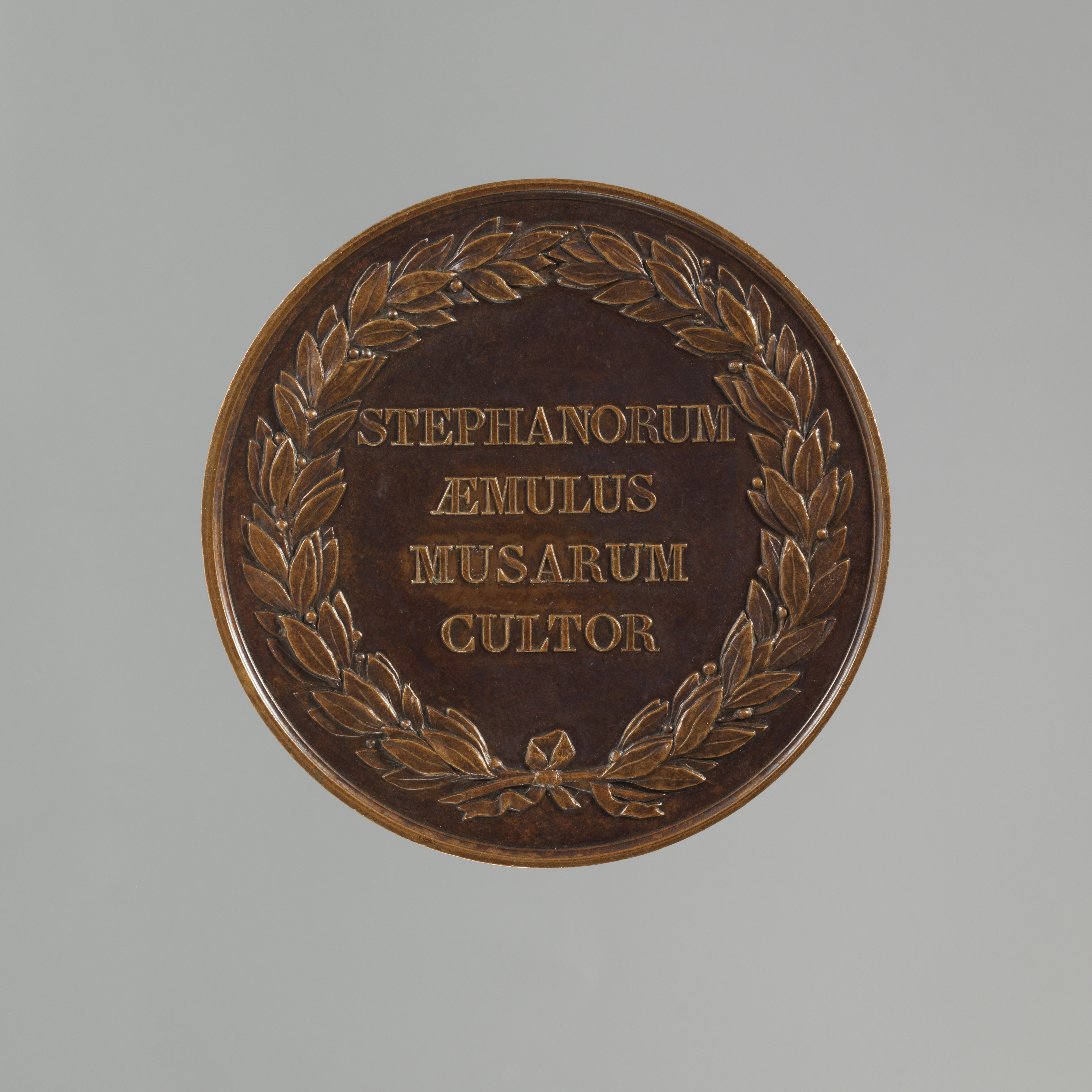Firmin Didot (1764-1836)
Jean-Jacques Barre French
after a drawing by Anne Louis Girodet-Trioson French
Not on view
Firmin-Didot is a Parisian printing firm run by a dynasty of publishers, the most famous of whom was Firmin (1764-1836), who inherited the family business in 1789 and ran it together with his brother Pierre (1760-1853). Around the turn of the nineteenth century, the brothers began to publish lavishly bound and illustrated editions of texts by Racine, Virgil and Horace, known as the Louvre editions. The French painter Anne-Louis Girodet-Trioson was among the artists from Jacques-Louis David’s studio commissioned to produce illustrations for the impressive tomes. It was perhaps during this period that Girodet came to know Firmin and subsequently produced the spectacularly handsome portrait of the publisher on which this medal is based (Versailles, 1823).
This striking portrait medal, executed by the exceptionally skilled and prolific medalist, Jean-Jacques Barre, exemplifies the secular shift in medallic art in post-Napoleonic France, when medalists employed a medium traditionally reserved for the likenesses of royalty to instead enshrine the memory of private individuals of great achievement..Portrayed in his mature age with fashionably tousled hair and the latest of contemporary dress, Didot projects a confident air befitting a man of his stature. Not only was Firmin the figurehead of his family business, he also was appointed director of the Imprimerie Royale by Napoleon in 1801, and invented the Didot fonts, which to this day embody the very notion of classic French elegance with their softly rounded serif lettering.
This image cannot be enlarged, viewed at full screen, or downloaded.
This artwork is meant to be viewed from right to left. Scroll left to view more.



